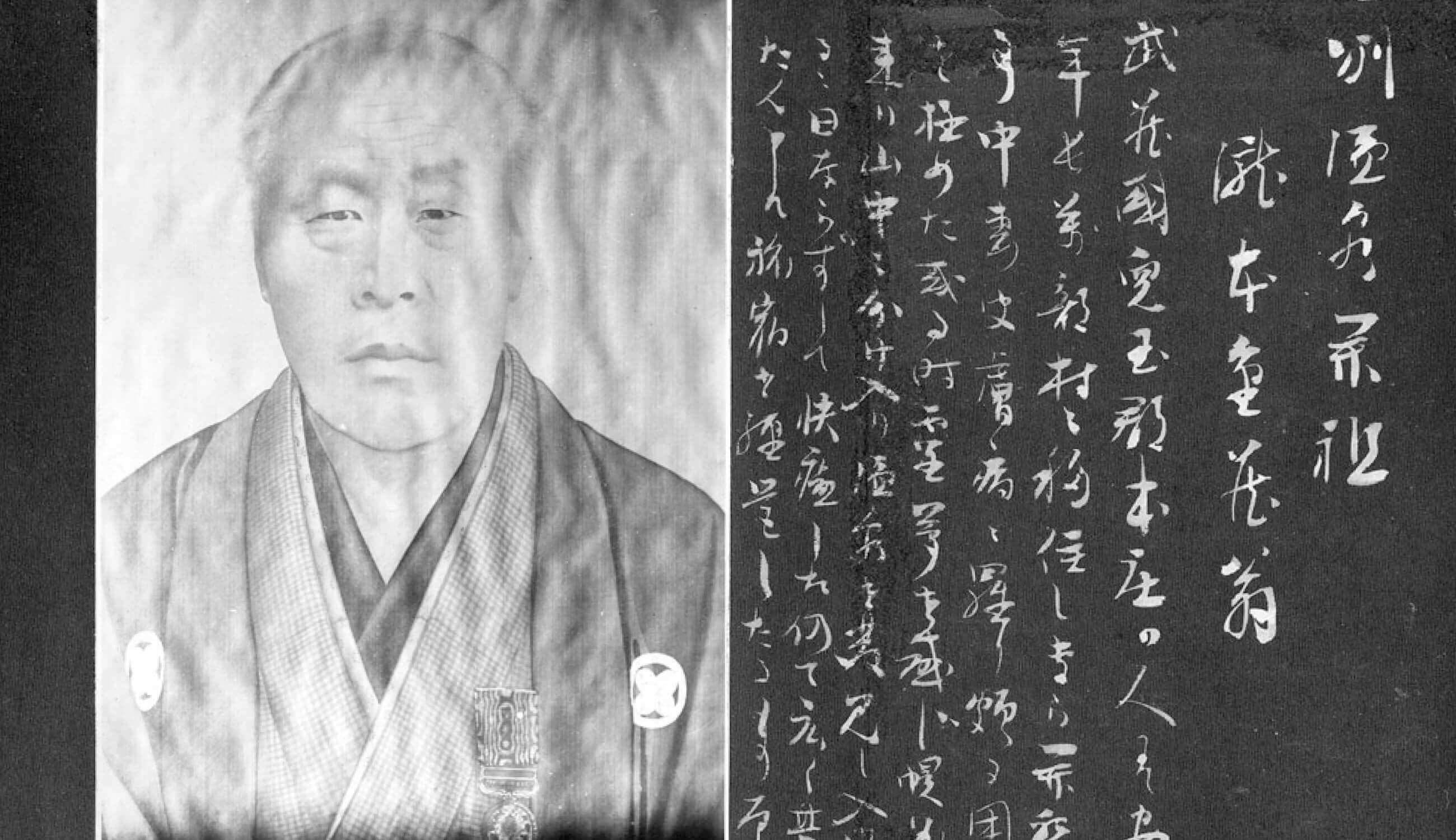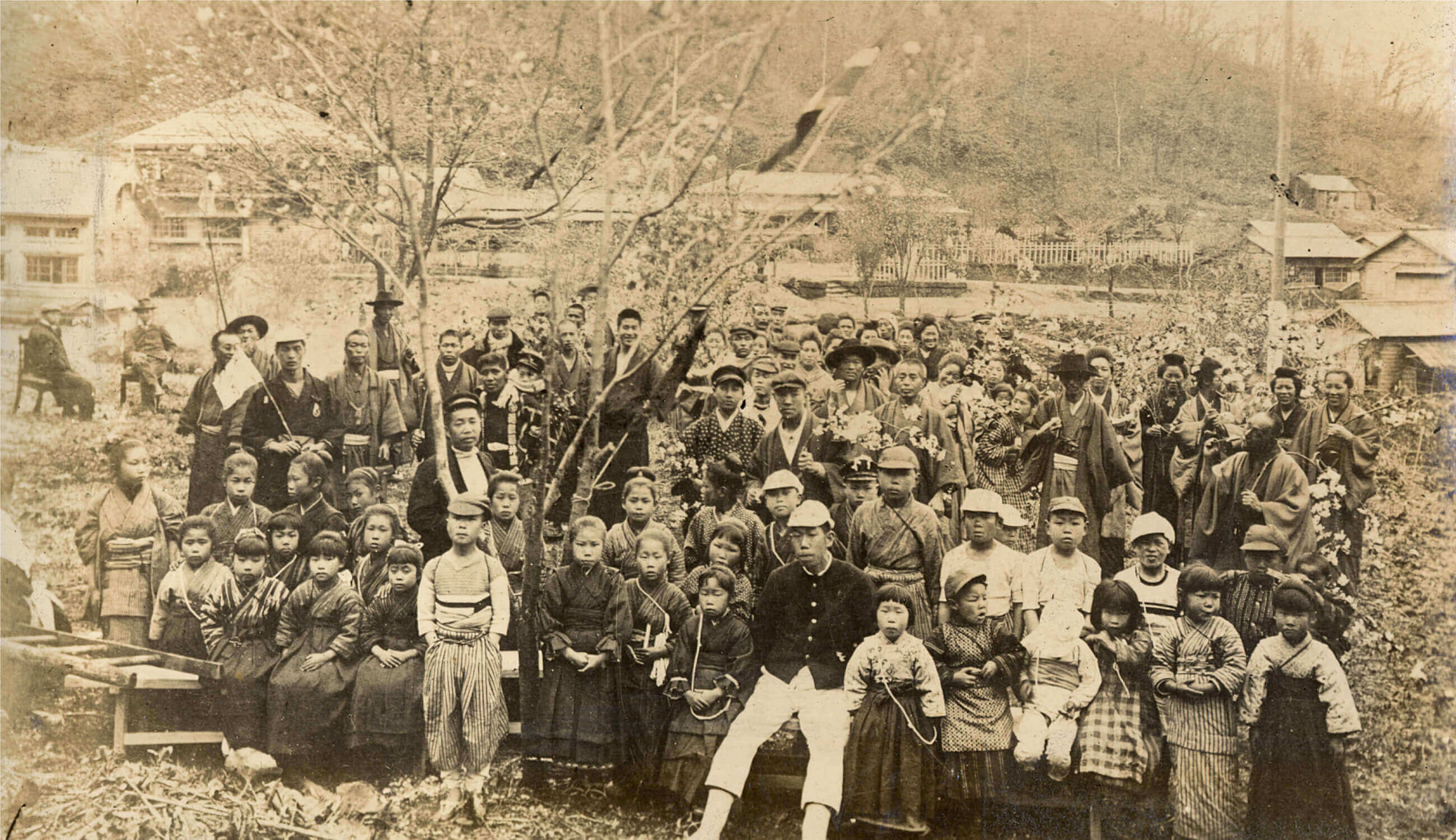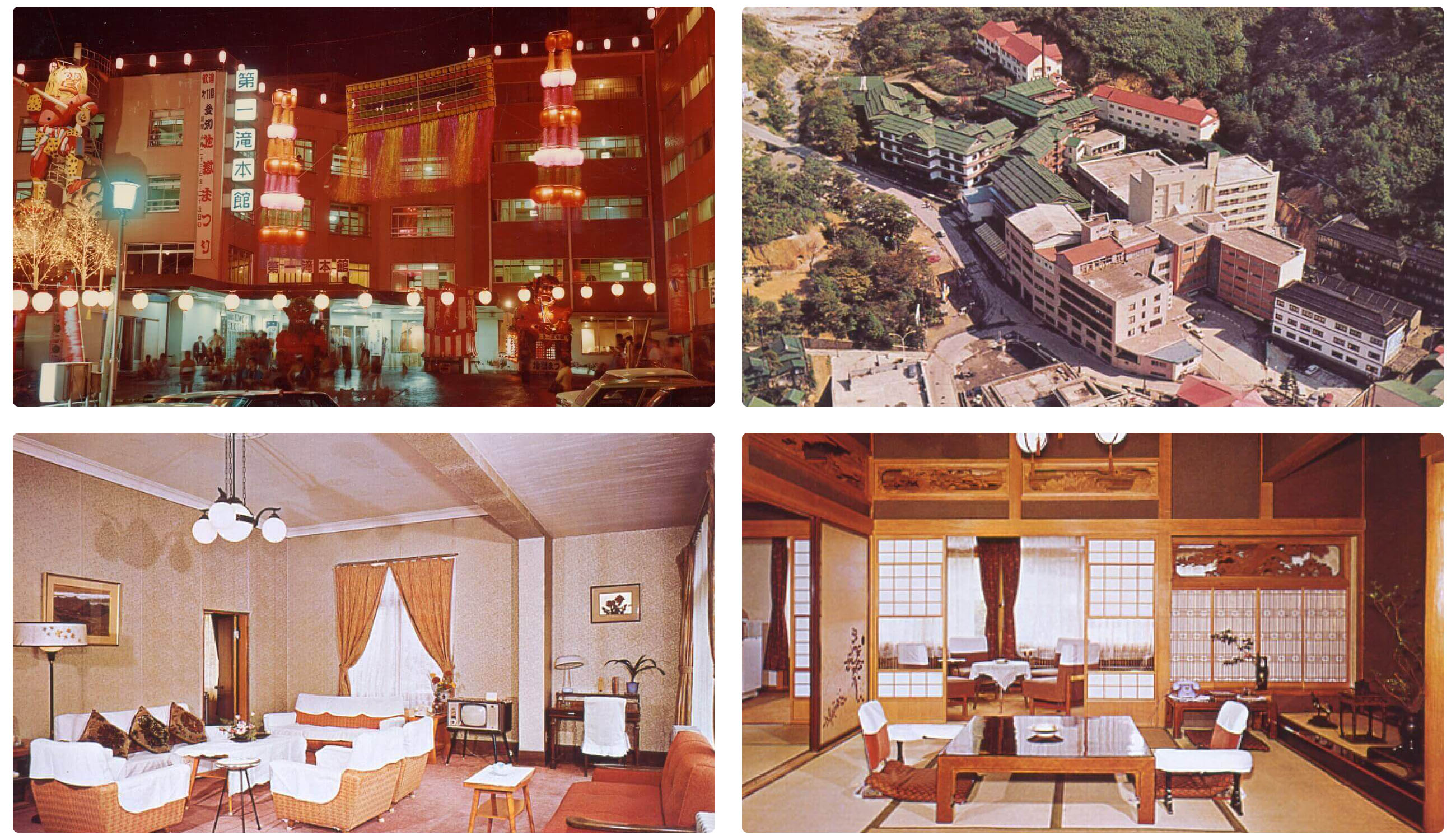歴史
History

歴史
History
The history of Dai-ichi Takimotokan is the history of our town.
A history built on love.
Kinzo Takimoto was a carpenter in Edo (now Tokyo). At the age of 32 he moved to Oshamambe, Hokkaido, and later to Horobetsu where he worked on the construction of an ekiteijo, an accommodation facility for men and horses providing postal relay services. His wife Sata suffered from serious dermatosis. When Kinzo heard about the hot springs in Noboribetsu, he pushed his way up a mountain path with Sata, and built a tiny hut there so she could treat her condition. Sata began bathing in the waters and finally recovered. To promote the spa’s healing properties, Kinzo obtained permission to be a yumori (the keeper of a hot spring with exclusive rights) and opened an inn that offered hot spring bathing. Everything at Dai-ichi Takimotokan is rooted in this hot spring—one that was established for a cherished wife.
The inn became popular among Hokkaido’s indigenous Ainu, who had been the first to enjoy the spring’s waters, workmen at Mt. Io, and samurai stationed at the jinnya (administrative headquarters) of the Sendai domain in Shiraoi and the Nambu domain. Kinzo established an ekiteijo in Noboribetsu and succeeded in multiple ventures, including fishery management and agricultural development.
From the mid-Meiji period, Noboribetsu Onsen grew in popularity as a place for social gatherings. With the increasing number of spa guests, Kinzo improved the paths to the hot spring. He was decorated with the Medal with Blue Ribbon for his achievements in operating a horse-drawn carriage service.
Noboribetsu Onsen, which Kinzo established, has become one of the most popular onsen resorts in Japan, welcoming 2.8 million visitors a year. After many changes over the years, in 1953 Yumoto Takimoto changed its name to Dai-ichi Takimotokan, and is committed to fostering Kinzo’s spirit of hospitality.
Dai-ichi Takimotokan timeline
1858 – 1938
Read more
| 1858 | Kinzo Takimoto settled in Oshamanbe and later transferred to Horobetsu, then to Noboribetsu. |
|---|---|
| 1881 | Using his own funds, Kinzo opened a new road over Momijidani with the aim of developing a hot spring. |
| 1888 | A two-story building was erected, and officially named Yumoto Takimoto or Takimoto Hot Spring. |
| 1890 | The building was expanded along with the first bathtub. |
| 1898 | Takimoto began offering hot water for paying customers, making it a sento or coin bath. |
| 1899 | Kinzo passed away at 72 years of age. Kinnosuke Takimoto, Kinzo’s eldest son and heir, succeeded to Kinzo’s name. |
| 1900 | The main building and inside bath were expanded, and the first sign saying Takimotokan erected. |
| 1902 | Kinnosuke Takimoto, 41 years old, passed away. |
| 1903 | Acquired Ishiyama Ryokan and Okamoto Ryokan and Dai-ni Takimotokan Building opened. |
| 1903 | The main building name was changed from Takimoto-kan to Dai-ichi Takimoto by Hama Takimoto. |
| 1904 | Sata Takimoto passed away. |
| 1913 | All property rights of the Takimoto family transferred to the Kuribayashi Company (Hot Spring Division). |
| 1927 | Gosaku Kuribayashi passed away at 62 years of age. |
| 1927 | Sotokichi Minami takes over Dai-ichi Takimoto. |
| 1928 | Construction to expand Dai-ichi Shinkan with three floors, 24 rooms, and a bath begins and is opened in April of that year. |
| 1933 | The baths including a radium spring were expanded and opened in January. |
| 1938 | Construction on large bath (largest in the Orient) at Dai-hachi Shinkan was completed in August. |
| 1938 | Izu Mitaka Onsen Takimoto opened. |
1939 – 1978
Read more
| 1939 | Sotokichi Minami passed away at 75 years old. Seikichi Minami takes over. |
|---|---|
| 1944 | Seikichi Minami passed away at 53 years old. Kunio Minami takes over. |
| 1946 | Dai-ichi Takimotokan holds the first hot water festival. |
| 1952 | Takimotokan Company, Ltd. is established. The late Kinosuke’s wife, Hama, passed away at 84 years old. |
| 1955 | Izu Mitaka Onsen Takimoto closes. |
| 1960 | Prince Takamatsu stays in the western-style building. |
| 1962 | The first part of new bath expansion begins and opens in August. |
| 1964 | Niseko Takimoto opens. The Takimoto Annex opens. |
| 1966 | The New East building opens in May together with the second phase of the bath expansion. |
| 1971 | The New West Building opens in October. Niseko Takimoto closes. |
| 1973 | Kunio Minami passed away at 61 years old. |
| 1973 | Taro Minami takes over as director. |
| 1977 | The Takimoto Inn opens in April. |
1979 – 2020
Read more
| 1979 | Takimoto Annex is closed. |
|---|---|
| 1986 | The new bath house is completed. |
| 1989 | The previous public bath is rebuilt as the main kitchen. The banquet room building Kasuikan opens. |
| 1998 | Buffet dining hall, Kiki-Saisai Attaka tei, opens. |
| 1999 | Dai-ichi Takimotokan website launched. |
| 2003 | Open-air baths for men and women expanded. |
| 2013 | Tomoko Minami takes over as president. Taro Minami takes over as chairman. |
| 2015 | Buffet dining, Genshirin and Yukiguni, renewal open in May. |
| 2018 | Renewal open in July (East Building) |
| 2019 | Renewal open in July. New group lounge open in August. (South Building) |
| 2020 | Renewal open in July (West Building) |






